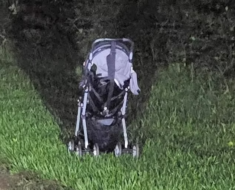Many of us have become so accustomed to purchasing groceries from stores that we’ve overlooked the abundant offerings provided by nature.
If you explore the right forest during the appropriate season, you’ll discover a variety of treasures ready to be gathered. (Be extremely cautious when foraging for items like mushrooms.)
You might even find nutritious delights in your own backyard, depending on your location. Still not convinced? Keep reading to learn more…
I’ll be the first to admit that I’m not a plant expert. I can’t identify most plants and herbs at a glance, and I’m certainly not qualified to recommend which greenery is safe to consume.
When I first learned about purslane, I knew it was something I needed to educate myself about.
Purslane is often considered a weed in many cultures, but it’s actually a green, leafy vegetable that can and should be eaten, much like spinach and lettuce.
 Credit / Wikimedia Commons
Credit / Wikimedia Commons
You might be familiar with purslane growing in sidewalk cracks, but it can also thrive in gardens. With a long history in traditional and alternative medicine, this plant is easy to manage.
Beyond its culinary uses, purslane is thought to enhance soil health by preventing erosion. By growing this plant in your yard, you can naturally boost the fertility and stability of your soil, benefiting other plants nearby.
 Credit / Wikimedia Commons
Credit / Wikimedia Commons
You might wonder why you should eat it. Purslane is packed with essential nutrients, offering omega-3 fatty acids, vitamins A, C, and E, and minerals such as magnesium, calcium, potassium, and iron.
In summary, purslane is widespread across various habitats and may even be growing naturally near your home. If that’s the case, I recommend taking advantage of it!






